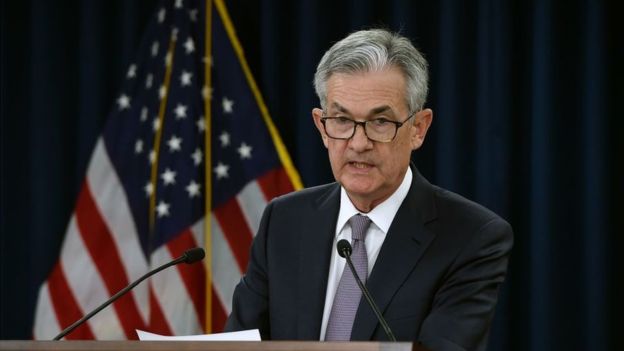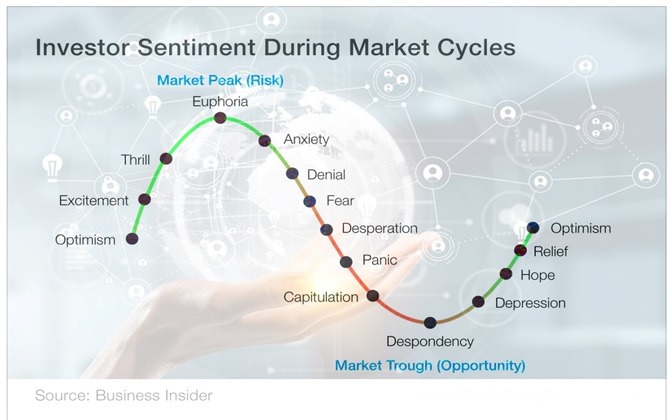
The Volatile Relationship Between Fiat Currency and Societal Stability
The intersection of fiat money and social unrest is a complex and often volatile relationship that has shaped economies and societies throughout history. Fiat currency, money that is not backed by a physical commodity but rather by the faith and credit of the issuing government, has been both a stabilizing force and a catalyst for upheaval. This essay will explore the multifaceted connections between fiat money systems and social instability, drawing on insights from mass psychology, technical analysis, and cognitive biases to paint a comprehensive picture of this critical economic and social phenomenon.
The Psychology of Fiat Money: Trust and Perception
At its core, the value of fiat money is rooted in collective belief and trust. As Warren Buffett once remarked, “The U.S. dollar has lost 90% of its purchasing power since 1950, and it will continue to lose value. That’s why I always say that the best investment you can make is in yourself.” This observation highlights a fundamental psychological aspect of fiat currency – its value is largely perceptual and subject to the whims of mass psychology.
When confidence in a fiat currency erodes, it can trigger a cascade of social and economic consequences. The famous investor George Soros, known for his theory of reflexivity, might argue that there is a feedback loop between the perceived value of money and its actual value. As people lose faith in a currency, they may rush to convert it into more tangible assets, further weakening its value and potentially sparking social unrest.
Technical Analysis: Charting the Course of Currency Crises
Technical analysis, typically associated with stock market trends, can also offer insights into the relationship between fiat money and social instability. Legendary trader Jesse Livermore, who made and lost several fortunes in his lifetime, emphasized the importance of understanding market psychology and trends. In the context of fiat money, technical analysis of exchange rates, inflation metrics, and other economic indicators can provide early warnings of potential currency crises that may lead to social unrest.
For example, the hyperinflation in Zimbabwe in the late 2000s was preceded by clear technical signals of currency devaluation and economic instability. These signals, if heeded, could have allowed for preemptive measures to mitigate the social upheaval that followed.
Cognitive Biases: The Irrational Element in Monetary Perception
Cognitive biases play a significant role in how individuals and societies perceive and interact with fiat money. Charlie Munger, Warren Buffett’s long-time partner, has spoken extensively about the impact of psychological biases on decision-making. In the context of fiat money, several biases come into play:
1. Normalcy bias: The tendency to believe that things will always function the way they normally have. This can lead to a false sense of security in the stability of a fiat currency, even in the face of mounting evidence to the contrary.
2. Availability heuristic: People tend to overestimate the likelihood of events they can easily recall. In countries with a history of hyperinflation or currency crises, this bias can lead to heightened anxiety about the stability of fiat money, potentially triggering preemptive actions that can exacerbate social unrest.
3. Loss aversion: The tendency to prefer avoiding losses over acquiring equivalent gains. In times of economic uncertainty, this bias can drive people to make irrational decisions with their money, potentially contributing to bank runs or other destabilizing behaviours.
Historical Examples: Lessons from the Past
The relationship between fiat money and social unrest is not merely theoretical; history provides numerous examples of how currency instability can lead to societal upheaval. One of the most dramatic examples is the hyperinflation in the Weimar Republic in the 1920s. As the German mark lost value at an astronomical rate, social order broke down, ultimately contributing to the rise of extremist political movements.
More recently, the collapse of the Venezuelan bolivar has led to widespread social unrest and economic chaos. As Ray Dalio, founder of Bridgewater Associates, noted, “The collapse of a currency is a very difficult thing to recover from, and it almost always leads to significant social and political upheaval.” The Venezuelan case study illustrates how the loss of faith in fiat money can rapidly erode social stability and lead to profound societal changes.
The Role of Central Banks: Balancing Act
Central banks play a crucial role in maintaining the stability of fiat currencies and, by extension, social order. John Bogle, founder of Vanguard Group, often emphasized the importance of sound monetary policy in maintaining economic stability. However, the actions of central banks can also contribute to social unrest if perceived as favouring certain groups over others.
For instance, quantitative easing policies implemented after the 2008 financial crisis were credited with stabilizing economies but also criticized for exacerbating wealth inequality. This tension highlights the delicate balance central banks must strike in managing fiat currencies to promote both economic stability and social cohesion.
Alternative Perspectives: Cryptocurrencies and the Future of Money
As concerns about the stability of fiat currencies persist, alternative forms of money, particularly cryptocurrencies, have gained traction. While not directly related to social unrest, the rise of cryptocurrencies reflects a growing distrust in traditional fiat systems. As Paul Tudor Jones II, a prominent hedge fund manager, stated, “Bitcoin reminds me of gold when I first got into the business in 1976.”
The emergence of decentralized digital currencies represents a potential paradigm shift in how societies think about and interact with money. While it’s too early to predict the long-term implications, the cryptocurrency phenomenon underscores the ongoing evolution of monetary systems and their relationship to social stability.
Global Implications: Interconnected Economies
In an increasingly globalized world, the stability of fiat currencies has far-reaching implications beyond national borders. As John Templeton, the legendary global investor, often noted, “The only way to avoid mistakes is to gain perspective.” This perspective is crucial when considering the potential for currency crises to spark contagion effects across interconnected economies.
The Asian Financial Crisis of 1997 is a prime example of how currency instability in one country can quickly spread to others, leading to widespread economic disruption and social unrest across an entire region. This interconnectedness underscores the importance of international cooperation in maintaining the stability of the global financial system.
The Role of Education and Financial Literacy
Addressing the potential for social unrest stemming from fiat money instability requires more than just sound monetary policy. As Benjamin Graham, the father of value investing, emphasized, “The investor’s chief problem – and even his worst enemy – is likely to be himself.” This observation highlights the critical role of financial education and literacy in mitigating the risks associated with fiat currency systems.
By improving public understanding of monetary policy, inflation, and the nature of fiat currency, societies can build resilience against the psychological factors that often contribute to currency-related social unrest. As Peter Lynch, the renowned mutual fund manager, often said, “Know what you own, and know why you own it.” This principle applies not just to individual investments but to a society’s relationship with its currency.
Technological Disruption and Monetary Systems
The rapid pace of technological change is reshaping the landscape of fiat money and its relationship to social stability. Jim Simons, the mathematician and hedge fund manager known for his quantitative approach to investing, has long recognized the power of technology to transform financial markets. In the context of fiat money, emerging technologies like blockchain and artificial intelligence are creating new possibilities for currency management and oversight.
These technological advancements have the potential to enhance the stability and transparency of fiat currency systems, potentially reducing the risk of social unrest stemming from monetary instability. However, they also introduce new complexities and potential vulnerabilities that must be carefully managed.
The Importance of Adaptability in Monetary Policy
As Carl Icahn, the activist investor, once said, “You learn in this business that if you want a friend, get a dog.” This cynical view underscores the importance of adaptability and resilience in the face of changing economic conditions. For central banks and policymakers, the ability to adapt monetary policy quickly and effectively is crucial in maintaining the stability of fiat currencies and preventing social unrest.
The COVID-19 pandemic provided a stark example of the need for flexible monetary policy in times of crisis. The rapid implementation of unprecedented stimulus measures by central banks around the world helped stave off potential economic collapse and social upheaval. However, the long-term consequences of these actions remain to be seen, highlighting the ongoing challenges of managing fiat currency systems in an uncertain world.
Conclusion: Navigating the Complex Relationship
The relationship between fiat money and social unrest is a complex and evolving phenomenon that requires ongoing attention and analysis. As David Tepper, the hedge fund manager known for his contrarian views, often says, “The key to success is to be willing to change your mind.” This flexibility of thought is essential in navigating the challenges posed by fiat currency systems and their potential impact on social stability.
By drawing on insights from mass psychology, technical analysis, and an understanding of cognitive biases, policymakers and citizens alike can work to build more resilient monetary systems and societies. As William O’Neil, founder of Investor’s Business Daily, reminds us, “The whole secret to winning in the stock market is to lose the least amount possible when you’re not right.” This principle of risk management applies equally to the broader challenge of maintaining social stability in a world of fiat currencies.
Ultimately, the key to mitigating the risks of social unrest stemming from fiat money instability lies in fostering transparency, education, and adaptability. By promoting a deeper understanding of monetary systems and their societal impacts, we can work towards a future where fiat currencies serve as a source of stability rather than a catalyst for upheaval.
The Art of Discovery: Articles that Open New Worlds

What Every Investor Should Know about the Dow Theory?

Patience Warren Buffett Quotes: Timeless Wisdom for Elegant Investing

What is return on investment in real estate?

Showcasing Investment Prowess: The Art of Global Tactical Asset Allocation

What is the purpose of portfolio diversification?

Precious Metals 101: Mastering How to Buy Gold and Silver Bars











